Believing IS Magic – Mossi Biiga Dolls
PRIMITIVE - Tuesday, July 22, 2014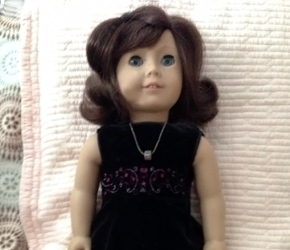 |
|
By Misaki Imagawa
As a child I always yearned for a little sister.
I was so persistent my mother finally conceded and bought me a doll. I felt thoroughly duped; however, I soon grew to adore the doll, which I named Stephanie after my babysitter. Stephanie would sit next to me at the dinner table. I’d make room for her in my school bag, sit her on a bathroom stool whenever I bathed, and refused to let my brother even get close to her. At night I would tuck her in bed beside me, and every morning I would profusely apologize when my wild sleeping habits threw her to the floor. I talked to Stephanie about everything, believing and never doubting that she understood all that I said.
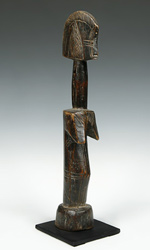 |
|
One time on vacation my family almost missed an international flight when Stephanie was left behind at the hotel. I sat and wailed at the airport, refusing to leave without her. My father persuaded me to board the plane, but only when he promised to have Stephanie mailed home with the fastest priority delivery service available. This was no easy feat as we were flying from Japan to Switzerland; however, within two days I was reunited with my Stephanie and all was good and right in the world.
After all these years, it still baffles me how a simple doll could become something so special. Yet, this happens all the time; and it happens regardless of gender, age, race or culture. Dolls have been with us since the dawn of civilization. They have served as sacred items and as play toys for children; and they still do today. Among the Mossi people of Burkino Fasso, young girls still carry dolls called biiga, which translates as ‘child.’ However, like most African dolls biiga are not only used for play, but also for magic.
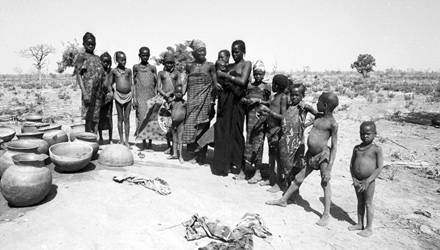 |
Photo credit: Eliot Elisofon |
Crafted from a single piece of wood by the village carver or smith, biiga are presented to young Mossi girls as toys. The dolls are cylindrical in shape with a semi-circular head, which sometimes features a downward extension out of the forehead. Although it may look like an elephant trunk or even a phallus, it is said to imitate the hairstyle worn by unmarried Mossi girls. Etches in the wood symbolize scarification marks and the beauty of adulthood, while the full mature breasts depict the splendor of motherhood.
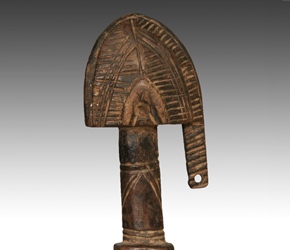 |
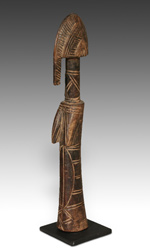 |
The girls are taught to take exceptional care of their dolls, which hopefully means they won’t get left behind in strange places! They wash, feed and carry them around like a mother would her child. The dolls are sometimes dressed in leather clothes and decorated with cowry shells and beads. In this regard there is little difference between the doll play of western children and the Mossi girls of West Africa. The biiga, however, do not end up on shelves when the girls outgrow them. They believe that any mistreatment of the doll will bring misfortune on their own future children. As such, the dolls are cared for until the girls grow into women and bear children of their own. In fact, the dolls are so sacred that the first drops of a new mother’s milk are given to their biiga dolls.
What I find most fascinating is how many African dolls show very little resemblance to the human figure, unlike Stephanie and typical western dolls. Barbie and biiga have little in common. Nonetheless, regardless of shape or appearance, young girls across the globe show a natural readiness to treat dolls with care and affection like they would little babies or children of their own. This kind of devotion to an inanimate object is not limited to dolls – it can extend to stuffed animals, sculpted figures or even rocks. For me, Stephanie was not the first or the last cuddly friend I had, but she was the first to let me experience the magic all dolls possess – the magic that comes from believing!
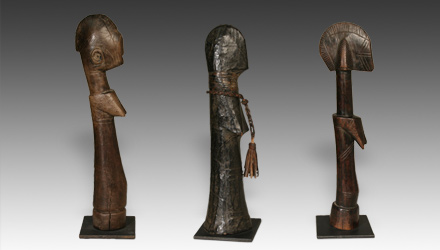
|
|
Download this Article: Believing Is Magic.pdf